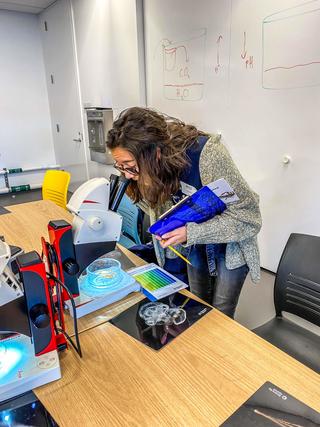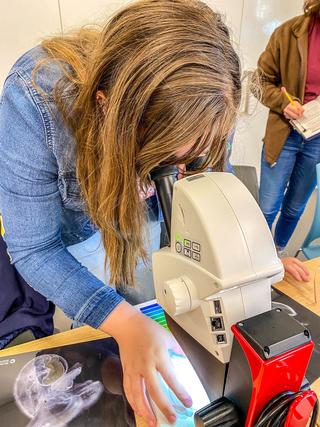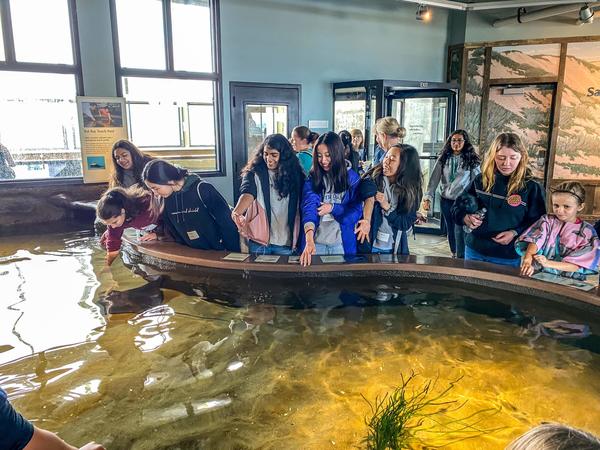
Students in AP Biology, AP Environmental Science, and Biology 2 classes recently visited the Monterey Bay Aquarium as a part of the experiential learning aspect of these classes. Each class was able to find connections to their class content, from evolution and anatomy to the different endangered species and ocean preservation. Students had the opportunity to watch a live sea otter feeding and interact with various starfish and other types of fish. Many of the exhibits at the aquarium are interactive, allowing students to gain a better understanding of the way the different aquatic biomes function and how they influence our lives as humans.
As part of the hands-on education, students visited the newly opened Bechtel Education Center at the aquarium where they conducted experiments to determine acidity levels in the ocean. Carbon dioxide is added to the atmosphere whenever people burn fossil fuels. As the amount of carbon dioxide in the atmosphere rises, the oceans absorb a lot of it. In the ocean, carbon dioxide reacts with seawater to form carbonic acid. This causes the acidity of seawater to increase. Increasing acidity will make it harder for corals to build skeletons and for shellfish to build the shells they need for protection. Corals are particularly important because they provide homes for many other sea creatures.
Overall, the Monterey field trip gave students an opportunity to see a more visual and concrete representation of the effects of global warming and climate change, and to also learn more ways to live sustainably in our constantly changing environment.


